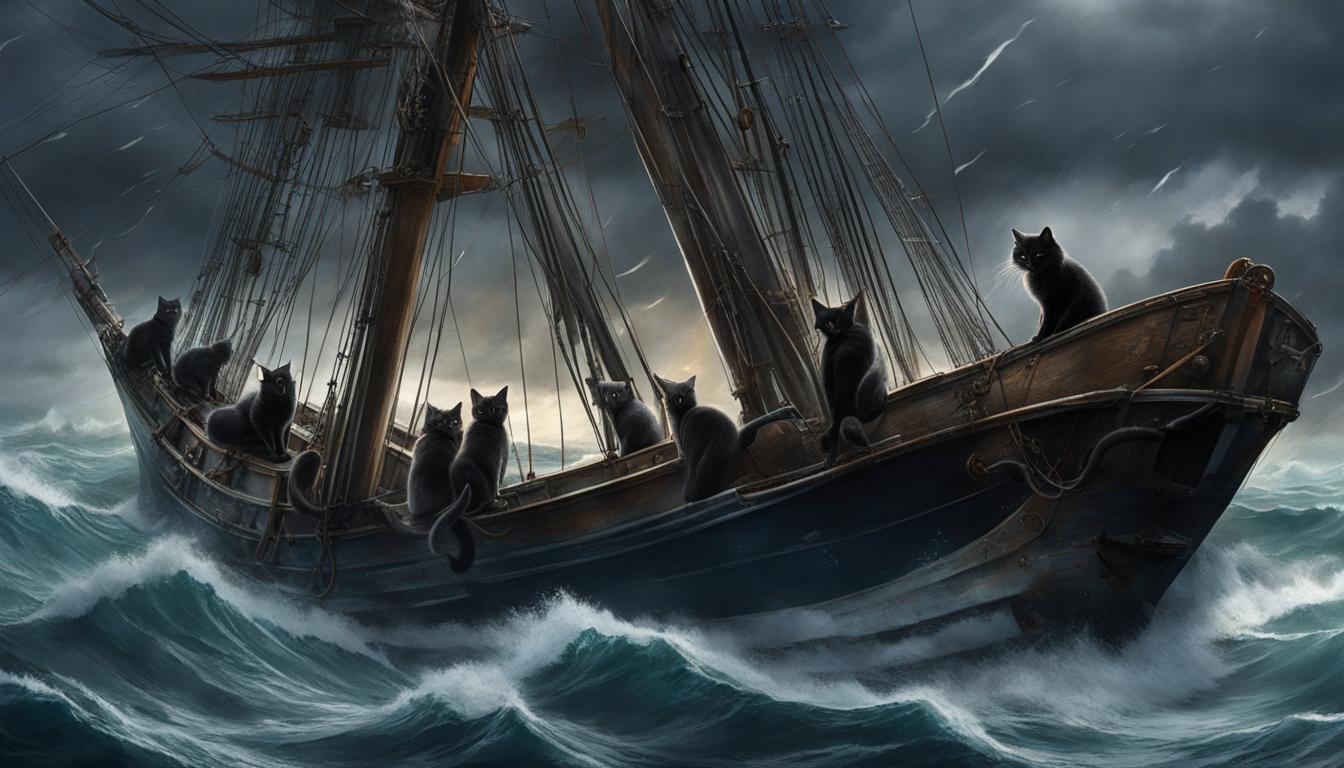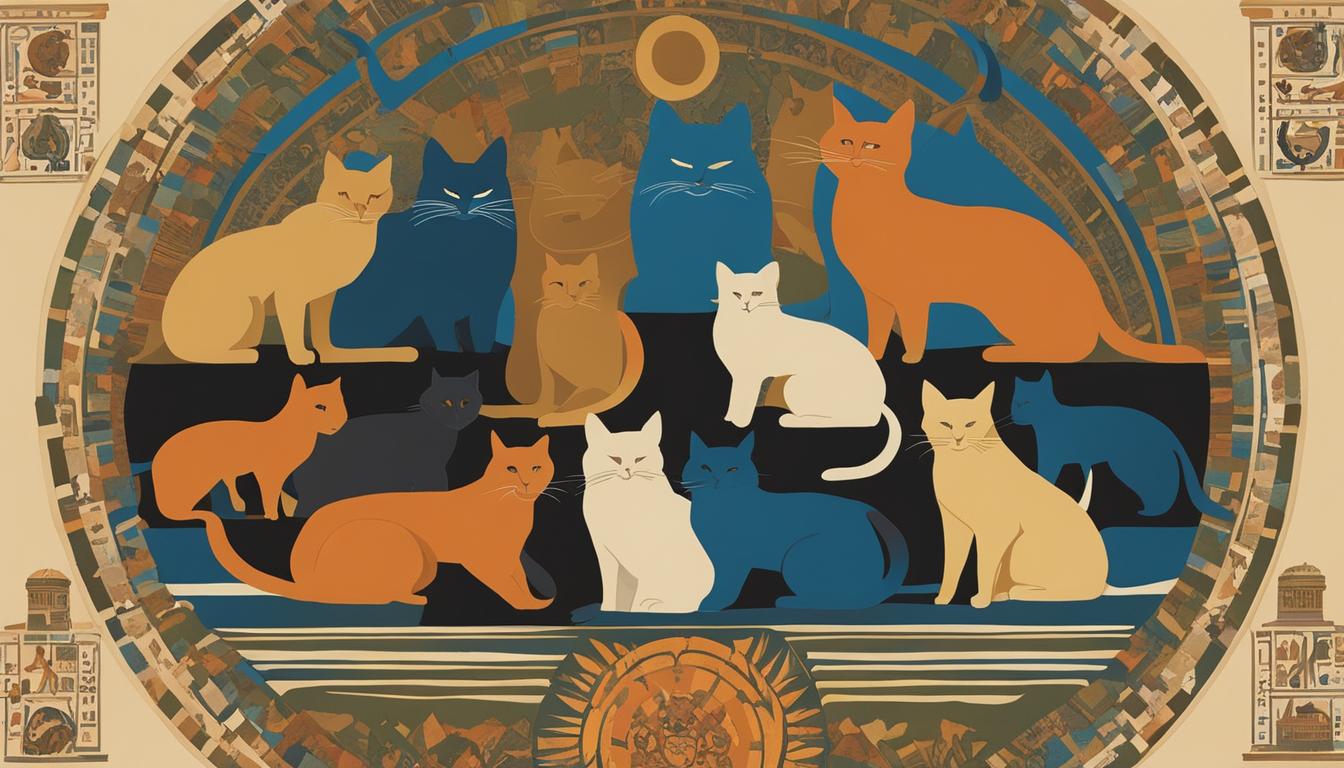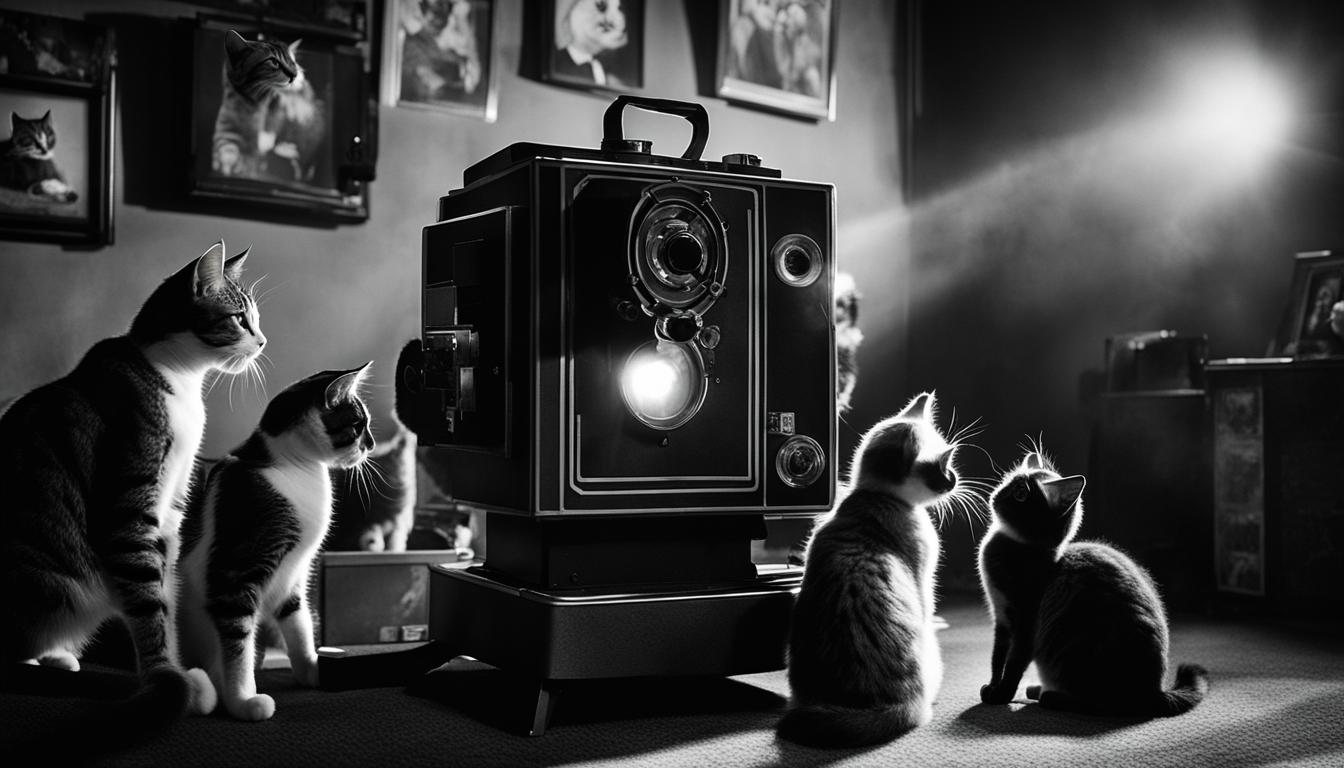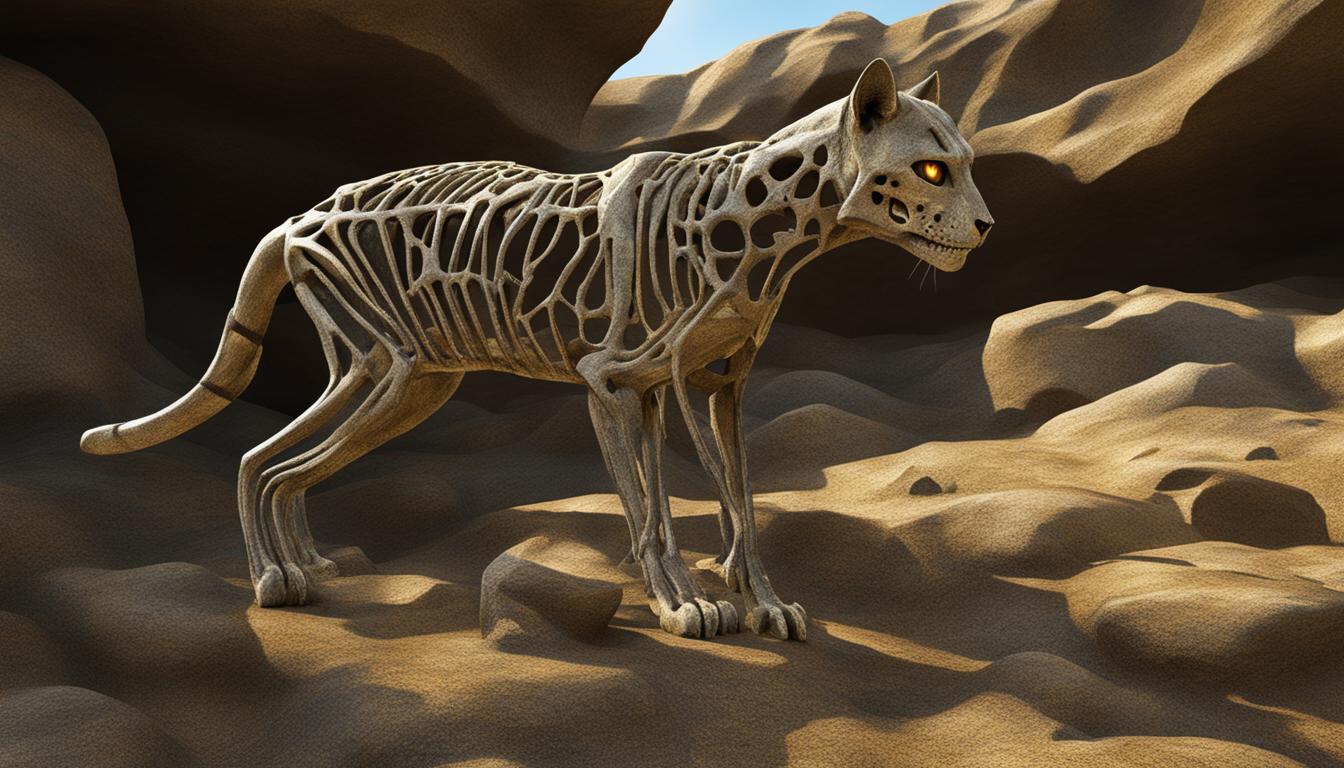Ahoy, me hearties! Prepare to embark on a captivating journey through maritime history, where the unsung heroes of the high seas were none other than our feline friends. Yes, you heard it right – cats! These mysterious creatures have been sailing the seas alongside sailors for centuries, their presence serving a purpose beyond what meets the eye.
Now, I know what you’re thinking – how could cats possibly have a role in the vast expanse of the ocean? Well, my curious mateys, let me enlighten you. Cats have been a staple on ships since ancient times, when the Egyptians first brought them aboard Nile boats to control those pesky bird populations. But their seafaring adventures didn’t stop there.
Our whiskered companions played a crucial role in pest control, keeping rat and mouse populations at bay. They were the unsung heroes below deck, valiantly protecting the ship’s provisions from these unwanted stowaways. But that’s not all they offered to the weary sailors during those long, treacherous voyages.
These feline sailors provided much-needed companionship and a sense of warmth amidst the harsh realities of life at sea. Whether it was a friendly purr or a comforting cuddle, cats were there to provide solace to the weary hearts of sailors.
But wait, there’s more! Cats also found themselves entangled in maritime superstitions and folklore. Some believed that having a cat on board brought good luck, while others saw them as omens of stormy seas. These beliefs, passed down through generations of sailors, added an air of mystery and intrigue to the already enchanting world of maritime cats.
So, me hearties, join me as we unravel the tales of seven famous ship cats and their symbolic significance in maritime history. From chance encounters with world leaders to acts of bravery in the face of danger, these feline adventurers have left an indelible mark on the annals of seafaring lore.
Key Takeaways:
- Cats have a long history of serving on ships, dating back to ancient times
- They played a crucial role in controlling pests and providing companionship to sailors
- Maritime superstitions and beliefs added an air of mystery to the world of maritime cats
- Seven famous ship cats have left their pawprints in maritime history
- These feline adventurers have showcased bravery, resilience, and the deep bond between humans and cats at sea
Blackie: The Ship Cat Who Met Winston Churchill
One of the most famous ship cats in maritime history is Blackie, who had the extraordinary privilege of meeting Prime Minister Winston Churchill during World War II. Blackie was a ship cat aboard HMS Prince of Wales, a British battleship that played a crucial role in the war. The ship’s crew had a deep affection for Blackie, who not only kept the rats at bay but also provided much-needed companionship during the long and arduous voyages.
In a historic photograph, Blackie can be seen cuddling up to Churchill, alongside President Franklin D. Roosevelt. This meeting between the world leaders emphasized the symbolism and significance of ship cats during wartime. Blackie became a celebrity overnight, capturing the hearts of people around the world and shedding light on the important role that these feline companions played in boosting morale among the crew.
Blackie’s encounter with Churchill is a testament to the unique bond that can form between sailors and their cats. As they faced the challenges and uncertainties of war, these cats provided comfort, companionship, and a sense of normalcy amidst the chaos of battle. Blackie’s story is just one example of the famous maritime cats who have left an indelible mark on history.
Notable Ship Cats in Maritime History
| Ship Cat | Notable Achievement |
|---|---|
| Blackie | Met Winston Churchill during World War II |
| Simon | Received the Dickin Medal for bravery during the Yangtze Incident |
| Peebles | Entertained the crew with playful tricks aboard HMS Western Isles |
| Mrs. Chippy | Accompanied the crew of the Endurance on an Antarctic expedition |
Unsinkable Sam: The Survivor Cat
Throughout naval history, there have been countless stories of brave and resilient feline companions who have braved the treacherous seas alongside sailors. One such remarkable cat is Unsinkable Sam, who gained fame during World War II for his incredible survival skills and ability to adapt to life at sea.
Originally known as Oscar, Unsinkable Sam was a ship’s cat aboard the German battleship Bismarck. When the ship sank during a fierce battle, Sam miraculously survived and was rescued by the crew of HMS Cossack. Little did anyone know that this was just the beginning of Sam’s incredible journey.
“Unsinkable Sam’s story exemplifies the resilience and adaptability of maritime cats, as well as the superstitions and traditions surrounding these feline companions at sea.”
After a short time on the HMS Cossack, tragedy struck once again, and the ship was torpedoed and sunk. However, true to his name, Unsinkable Sam managed to survive once more and was rescued by the crew of HMS Ark Royal. Despite the dangers he had faced, Sam continued to serve as a good luck charm aboard the ship, providing comfort and companionship to the sailors.
Unsinkable Sam’s incredible tale captures the spirit of sea-faring cats in naval history. Their resilience, adaptability, and enduring bond with sailors have made them an integral part of maritime traditions. Legends like Unsinkable Sam continue to inspire and remind us of the remarkable journeys that these feline companions have embarked upon alongside their human counterparts.
| Cat Name | Ship | Survival Stories |
|---|---|---|
| Unsinkable Sam | Bismarck, HMS Cossack, HMS Ark Royal | Survived sinking of three ships |
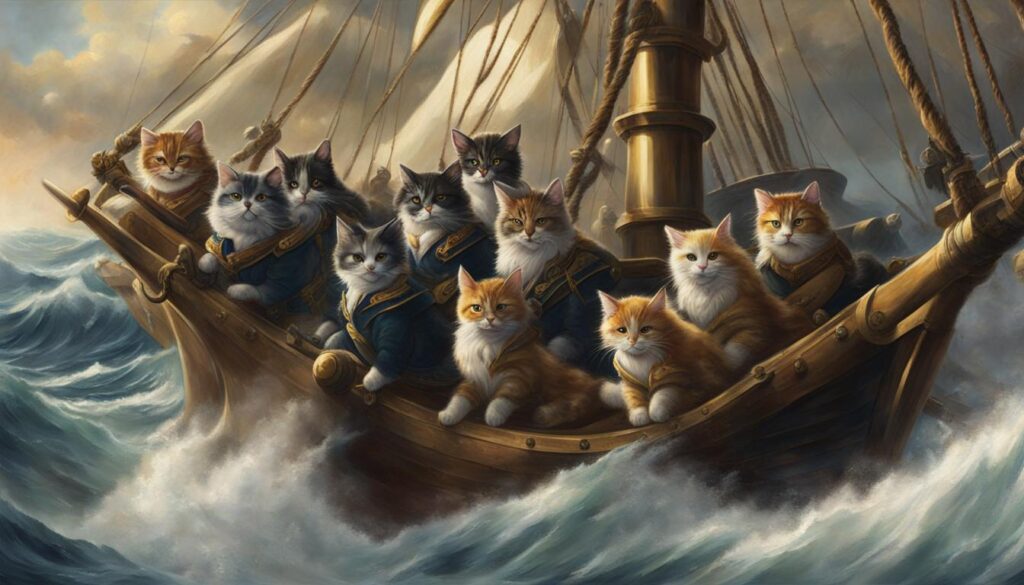
The Resilient Cats of the Sea
Unsinkable Sam’s story is not unique. Throughout maritime history, cats have proven themselves to be resilient and adaptable companions. These feline sailors have braved storms, shipwrecks, and battles, providing comfort, companionship, and even pest control during long voyages.
Maritime cat traditions have developed around the belief that cats bring good luck and protect ships from evil spirits. Sailors would often keep cats aboard their vessels to ward off mice, rats, and other pests that could damage the ship’s supplies. The presence of cats also served as a morale booster for the crew, providing a sense of home and comfort in the harsh and unpredictable environment of the sea.
The tales of Unsinkable Sam and other brave ship cats remind us of the enduring bond between humans and animals. These stories offer a glimpse into the fascinating lives of sea-faring cats and their historical significance in naval traditions. From surviving multiple shipwrecks to providing emotional support during wartime, these feline companions have carved their place in maritime history with their remarkable resilience and unwavering loyalty.
Simon: The Bravery Medal Cat
Simon, the ship’s cat of HMS Amethyst, was not just an ordinary feline companion. He became a true hero during the Yangtze Incident in 1949, showcasing the extraordinary roles that ship cats played in historical events. Simon’s brave actions and unwavering dedication made him a symbol of courage and resilience.
Simon’s main duty aboard the HMS Amethyst was to control the ship’s rodent population, but his impact went far beyond that. During the ship’s captivity on the Yangtze River, Simon provided emotional support to the crew and helped boost their morale. His presence brought a sense of comfort and companionship during the challenging times.
The significance of Simon’s bravery was recognized by the People’s Dispensary for Sick Animals (PDSA), who awarded him the Dickin Medal – the highest honor for animals in war. This prestigious award highlighted the vital role that ship cats, like Simon, played in providing both practical and emotional support to sailors.
Simon’s Heroic Actions
Simon’s bravery during the Yangtze Incident was truly remarkable. Despite being injured by shrapnel and suffering burns, he continued to perform his duties and care for the crew. His actions inspired the sailors and provided a glimmer of hope during a time of darkness and uncertainty. Simon truly embodied the resilience and loyalty that ship cats are known for.
Simon’s story is just one example of the historical roles that ship cats played and the special bond formed between these feline companions and sailors. Whether it was providing pest control, boosting morale, or offering emotional support, ship cats like Simon made a significant impact on maritime history and folklore.
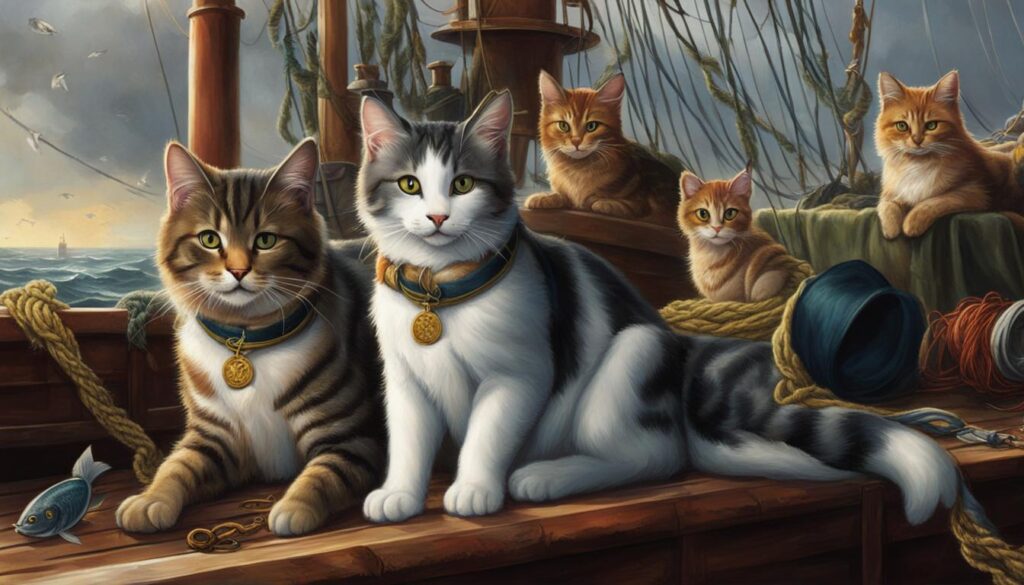
| Ship’s Cat | Historical Role |
|---|---|
| Blackie | Symbol of unity during wartime |
| Unsinkable Sam | Survivor and symbol of resilience |
| Peebles | Entertainment and companionship for sailors |
| Mrs. Chippy | Bringing a sense of domesticity to expeditions |
Cats as Sailors’ Companions: The Playful Tricks of Peebles
Throughout maritime history, cats have served as loyal companions to sailors on their sea voyages. One notable feline sailor was Peebles, the master cat aboard HMS Western Isles during World War II. Peebles was not just an ordinary ship cat; he was known for his exceptional intelligence and playful tricks, which brought joy and entertainment to the sailors during their time at sea.
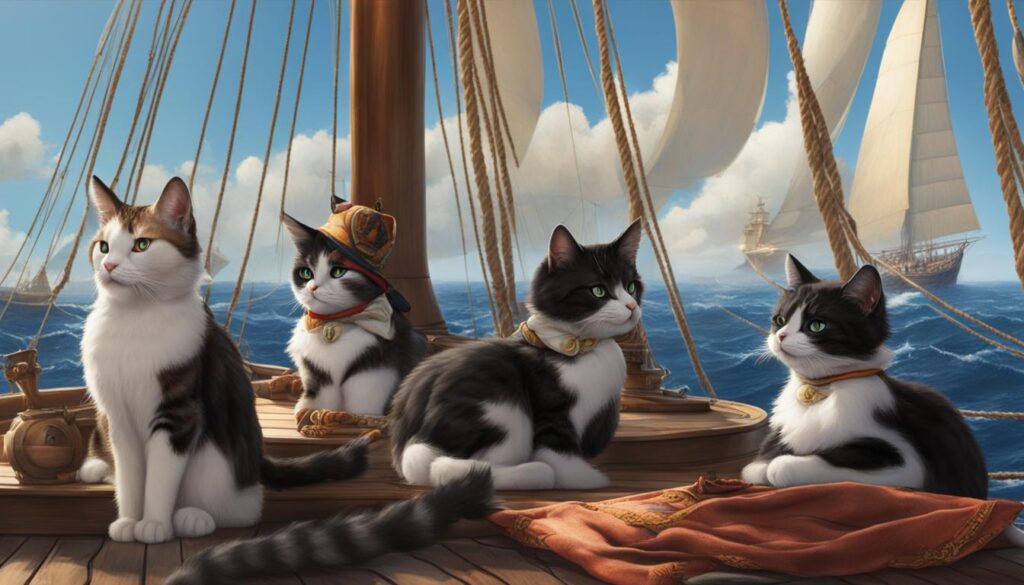
Peebles had a talent for learning tricks that captivated the crew. One of his most impressive feats was shaking hands with the sailors. It was a sight to behold as Peebles would extend his paw, mimicking the human gesture of a handshake. Sailors would eagerly line up to interact with Peebles and marvel at his intelligence and dexterity.
In addition to shaking hands, Peebles would also jump through hoops, demonstrating his agility and adding an element of excitement to the sailors’ daily routines. His playful antics provided much-needed amusement and helped alleviate the monotony of long sea voyages.
Peebles’ Tricks:
- Shaking hands with sailors
- Jumping through hoops
- Performing acrobatic tricks
Peebles’ ability to perform these tricks not only entertained the crew but also showcased the special bond that developed between sailors and their feline companions. Peebles brought a sense of joy and camaraderie to the men aboard HMS Western Isles, creating a positive and uplifting atmosphere during the challenging times of war.
The playful tricks of Peebles exemplify the remarkable relationships that can form between humans and cats during sea voyages. They serve as a reminder of the important role these furry companions played in boosting morale and providing companionship to sailors throughout history.
| Ship Cat | Tricks |
|---|---|
| Peebles |
|
Mrs. Chippy: The Arctic Explorer’s Companion
In the annals of maritime history, Mrs. Chippy stands as a feline companion who braved the treacherous Antarctic waters alongside the crew of the Endurance. This tiger-striped tabby brought more than just warmth and charm to the sailors; she embodied a sense of domesticity and normality in the midst of their daring expedition.
As Sir Ernest Shackleton and his crew embarked on their ill-fated journey to be the first to traverse the Antarctic continent, Mrs. Chippy provided solace and companionship. She became an honorary member of the crew, winning the hearts of the sailors with her playful antics and soothing purrs.
“A ship is no place for a cat,” they say. But Mrs. Chippy defied such superstitions, fearlessly exploring the icy decks and warming the hearts of those aboard the Endurance. She brought a touch of home to an inhospitable environment, reminding the crew of the comforts they left behind.”
However, tragedy struck as the crew found themselves trapped in the ice for months. When their supplies dwindled and survival became paramount, the heart-wrenching decision was made to euthanize Mrs. Chippy and the other animals onboard. It was a sacrifice that highlighted the grim realities of maritime expeditions, where even beloved companions must be let go in the face of survival.
| Table: Famous Cats Aboard Ships | |
|---|---|
| Blackie | Met Winston Churchill aboard HMS Prince of Wales |
| Unsinkable Sam | Survived three shipwrecks, including the sinking of the Bismarck |
| Simon | Hero of the Yangtze Incident, awarded the Dickin Medal |
| Peebles | Master cat with exceptional intelligence and playful tricks |
| Mrs. Chippy | Accompanied the crew of the Endurance on their ill-fated Antarctic expedition |
The tale of Mrs. Chippy serves as a poignant reminder of the emotional bond between sailors and their feline companions. These cats not only fulfilled practical roles on ships but also provided comfort, joy, and a sense of normality in the face of adversity. They became legends in their own right, embodying the maritime cat traditions that have endured throughout history.
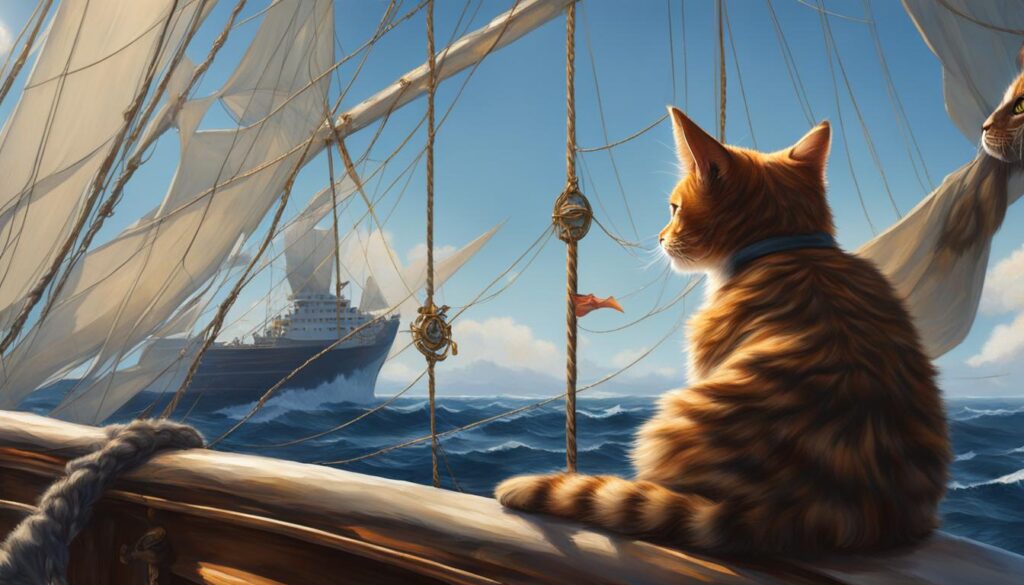
As we delve into the stories of these maritime felines, we uncover the fascinating connection between cats and the high seas. From the superstitions that surround them to their significant roles in historical events, these cats have left an indelible mark on maritime history. They remind us that even in the harshest of environments, the companionship and loyalty of a cat can provide a glimmer of hope and humanity.
Conclusion
As I reach the end of this maritime journey, I can’t help but marvel at the incredible role cats have played in our seafaring history. From their humble beginnings as pest controllers on Nile boats to their esteemed status as companions and symbols of luck, these furry sailors have left an indelible mark on the maritime world.
Whether it’s the famous ship cats like Blackie and Unsinkable Sam, or the lesser-known but equally cherished companions like Peebles and Mrs. Chippy, each feline sailor has a story to tell. They remind us of the unique bond that exists between humans and cats, a bond that transcends time, distance, and even the harshest of conditions.
Cats in maritime history are not just a mere footnote. They embody tradition, resilience, and the enduring spirit of exploration. They have warmed the hearts of sailors, brought joy and entertainment during long voyages, and provided solace in times of hardship. Their pawprints are etched in the annals of maritime lore, a testament to their unwavering presence and the unwavering connection they share with those who sail the seas.
FAQ
Did cats serve any specific purpose on ships?
Yes, cats were primarily kept on ships to control the rat and mice populations, serving as pest controllers.
What other roles did ship cats have?
Ship cats also provided companionship to sailors during long voyages, boosting morale among the crew.
Were there any famous ship cats?
Yes, some famous ship cats include Blackie, Unsinkable Sam, Simon, Peebles, and Mrs. Chippy.
Did ship cats ever receive recognition or awards?
Yes, Simon, the ship’s cat of HMS Amethyst, received the highest honor for animals in war, the Dickin Medal.
What happened to ship cats during harsh expeditions?
In some cases, when supplies ran low, ship cats had to be put down, as seen in the tragic story of Mrs. Chippy aboard the ship Endurance.
How did ship cats bring joy to sailors?
Ship cats like Peebles would showcase their exceptional intelligence and playful tricks, providing entertainment to the sailors.
What do ship cats symbolize in maritime history?
Ship cats symbolize luck, resilience, and the unique bond between humans and animals in the maritime world.

